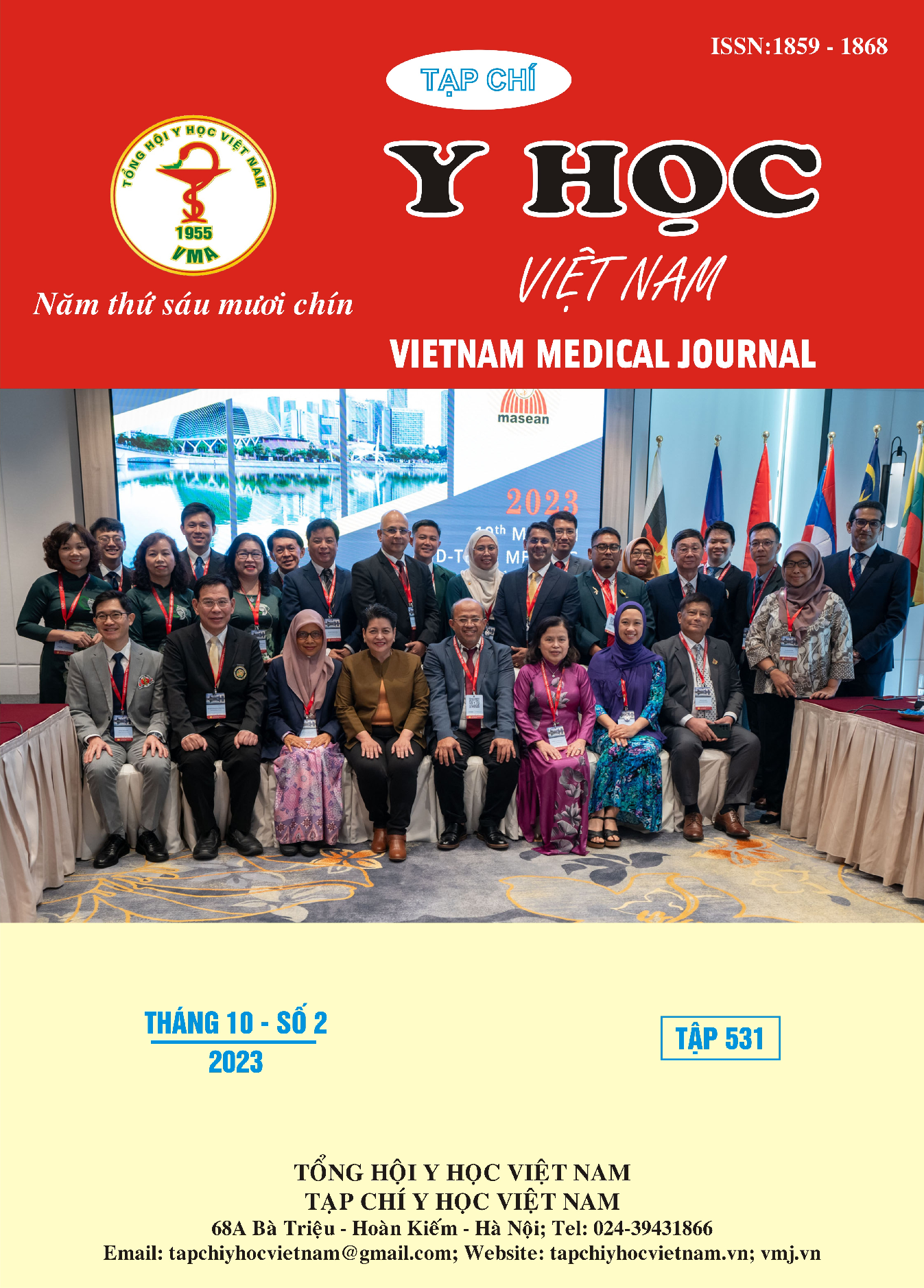A STUDY ON CLINICAL, PARACLINICAL ON PUSTULAR PSORIASIS AT CAN THO HOSPITAL OF DERMATO-VENEREOLOGY IN 2021-2023
Main Article Content
Abstract
Background: Pustular psoriasis is a rare clinical form of psoriasis. In particular, systemic pustular psoriasis has a high potential to threaten life and death, so early recognition and timely treatment are extremely important. Objectives: describe clinical and para-clinical characteristics of pustular psoriasis patients at Can Tho City Dermatology Hospital in 2021-2023. Materials and Methods: case-series study on 59 pustular psoriasis patients at Can Tho hospital of Dermato-Venereology in 2021-2023. Results: average age of onset was 32.77±16.75 years old. Of which, the group ≤40 years old accounts for the highest proportion of 69.5%, the group >40 years old accounts for 30.5%. Systemic pustular psoriasis is the most common clinical form, accounting for 100% in our study. Accompanying clinical symptoms include fever (55.9%), nail lesions (54.2%), geographic tongue (55.2%), and psoriatic arthritis (13.6%). Para-clinical features in patients with pustular psoriasis include increased white blood cells (accounting for 76.3%), and blood speed hour 1 and hour 2 sedimentation increased (accounted for 100%), CRP increased (accounted for 84.7%), AST increased (accounted for 13.6%), ALT increased (accounted for 28.8%), albumin decreased (accounted for 62.7 %) and calcium decreased (accounting for 69.5%). Conclusions: Pustular psoriasis is a rare clinical form of psoriasis with diverse clinical manifestations, usually early onset at the age of 40 years or younger. Para-clinical features that need attention include leukocytosis, blood glucose, AST, ALT and calcium.
Article Details
Keywords
pustular psoriasis, pustular, geographic tongue
References
2. Nguyễn Trọng Hào (2019), "Vảy nến", Hướng dẫn chẩn đoán và điều trị bệnh da liễu, Nhà xuất bản y học, TPHCM, tr. 5-22.
3. Baker H., Ryan T. J. (1968), "Generalized pustular psoriasis. A clinical and epidemiological study of 104 cases", Br J Dermatol, 80 (12), pp. 771-793.
4. Choon S. E., Lai N. M., Mohammad N. A., et al. (2014), "Clinical profile, morbidity, and outcome of adult-onset generalized pustular psoriasis: analysis of 102 cases seen in a tertiary hospital in Johor, Malaysia", Int J Dermatol, 53 (6), pp. 676-684.
5. Dawson T. A. (1974), "Tongue lesions in generalized pustular psoriasis", Br J Dermatol, 91 (4), pp. 419-424.
6. den Dunnen J. T., Antonarakis S. E. (2000), "Mutation nomenclature extensions and suggestions to describe complex mutations: a discussion", Hum Mutat, 15 (1), pp. 7-12.
7. Farooq M., Nakai H., Fujimoto A., et al. (2013), "Mutation analysis of the IL36RN gene in 14 Japanese patients with generalized pustular psoriasis", Hum Mutat, 34 (1), pp. 176-183.
8. Guerreiro de Moura C. A., de Assis L. H., Góes P., et al. (2015), "A Case of Acute Generalized Pustular Psoriasis of von Zumbusch Triggered by Hypocalcemia", Case Rep Dermatol, 7 (3), pp. 345-351.
9. Jin H., Cho H. H., Kim W. J., et al. (2015), "Clinical features and course of generalized pustular psoriasis in Korea", J Dermatol, 42 (7), pp. 674-678.
10. Ly K., Beck K. M., Smith M. P., et al. (2019), "Diagnosis and screening of patients with generalized pustular psoriasis", Psoriasis (Auckl), pp. 37-42.
11. Sugiura K., Takemoto A., Yamaguchi M., et al. (2013), "The majority of generalized pustular psoriasis without psoriasis vulgaris is caused by deficiency of interleukin-36 receptor antagonist", J Invest Dermatol, 133 (11), pp. 2514-2521.


